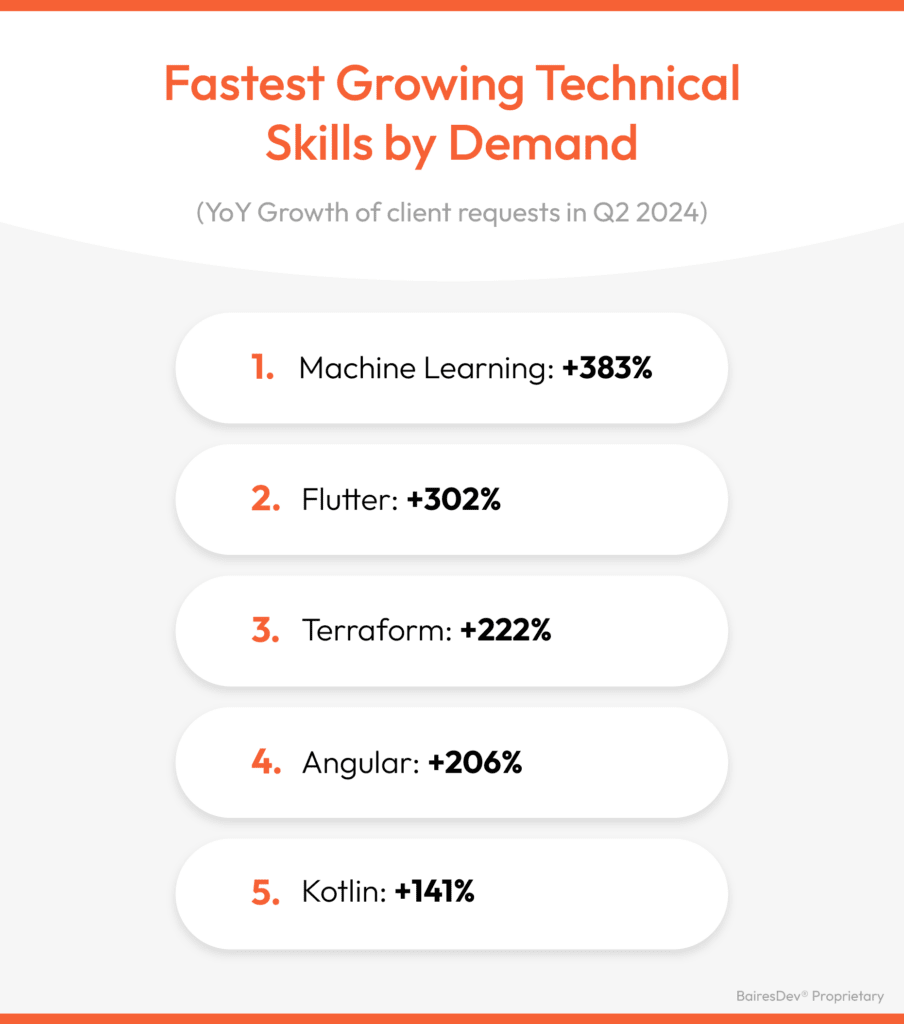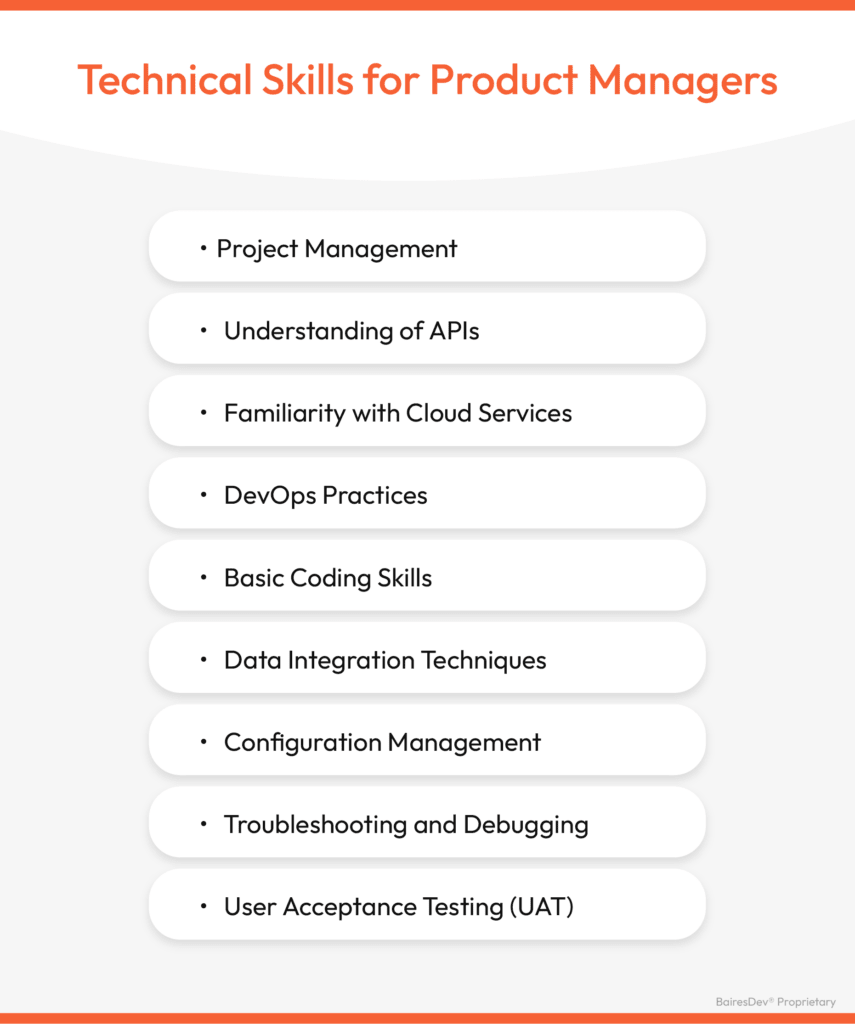The rapid integration of AI technologies into everyday applications is transforming industries and reshaping job roles across the board. As AI becomes more mainstream, have you ensured your product development teams are able to keep pace with the evolving landscape?
IDC reports that by 2025, over 90% of organizations will face a skills shortage, costing over $6.5 trillion globally due to delayed product launches, reduced customer satisfaction, and missed revenue targets. This is a business concern, not just a talent one. The transformation triggered by AI isn’t just technical; it requires everyone in product development, from designers to QA testers, to evolve their skill sets. For product developers, this evolution means acquiring a broad spectrum of new skills and adapting existing ones to leverage AI.
For instance, product designers need to grasp AI algorithms to create smarter interfaces, and QA testers must learn to test AI-driven features. Customer discovery specialists will rely on AI for deeper data analysis, while product analysts will use it to extract actionable insights. This shift is key to staying competitive and successfully launching products. Let’s take a look at the new skill sets that product development teams should keep an eye on.
Hard Skills in the Age of AI
Technical proficiency is crucial for anyone looking to excel in AI-driven product development. This means mastering key AI tools, platforms, and the programming languages that drive AI development.
Overview of Essential AI Tools and Platforms
AI tools and platforms have evolved significantly, extending beyond integrated development environments (IDEs) to touch every part of the software development lifecycle (SDLC). Now, we could sit down and give a rundown of every famous AI tool out there, but that would just be retreading old ground. TensorFlow, PyTorch, and other industry mainstays have more information written about them on the internet than gossip about Hollywood stars.
Instead, let’s discuss why people other than data scientists and engineers could and should learn about these tools and how they relate to product development. No, Laura from R&D doesn’t have to create her own AI model (but she could). Rather, it’s about broadening horizons and helping our teams understand how AI fits into their overall strategy. For example, product designers and marketing departments that understand data cleaning can shape their strategies around its basics. This knowledge helps them create tools and solutions that produce cleaner data for training models.
Integrating a basic understanding of AI tools into your product team’s knowledge arsenal equips them to think in terms of modeling. This empowers the entire team to collaboratively identify areas for innovation, enhancing the overall product development process.
Our internal research at BairesDev indicates a rising demand for specialized technical skills, with machine learning leading the way in 2024. The fastest-growing technical skills are the following.

This tells you just how much the market is paying attention to AI and machine learning. It’s also a signal for you to consider data literacy, data analysis, and other related skills as essential learning areas for your team.
Data Literacy
Data literacy encompasses the understanding of data analysis, data management, and big data technologies. This skill set empowers teams to extract meaningful insights from vast datasets, facilitating informed, data-driven decision-making.
At its core, data literacy prompts the critical question: “What does this data mean?” To turn results from an AI model into actionable goals, it’s essential to understand what the numbers represent, how projections work, and the accuracy of the data. Without this knowledge, we risk merely interpreting numbers without real insight. And we believe we’ve all been there at some point!
Examples of data literacy in action:
- Product Developers: With data literacy, developers can identify user needs and optimize features based on insights from data analysis.
- Quality Assurance: QA teams can detect patterns in defects, leading to improved testing processes.
- UX Designers: Understanding user behavior through data analysis helps UX designers enhance the overall user experience.
- Product Marketers: They can track campaign performance and adjust strategies for better ROI based on data insights.
- Project Managers: Data literacy enables project managers to make informed decisions on resources.

Understanding Data Analysis
While data literacy focuses on the ability to read and interpret data, data analysis is the process of inspecting, cleaning, and modeling that data to uncover insights that support decision-making. For product development teams—product designers, developers, and managers—mastering data analysis is key for driving innovation.
- Spotting Market Trends
Product managers can utilize data analytics to track social media trends and online searches, identifying a rising demand for eco-friendly products. This insight can lead to the creation of a new sustainable product line that aligns with customer interests.
- Improving User Experience
Product designers can analyze customer feedback and usage patterns to discover which software features are most valued by users. This enables them to enhance popular features and rethink or redesign those that aren’t performing well.
- Streamlining Development
Developers can examine usage statistics to determine which functionalities require more attention, allowing them to prioritize tasks based on user needs.
- Anticipating Demand
Predictive analytics empowers product managers to forecast future market demands. For instance, a fashion retailer can anticipate seasonal trends using data, guiding inventory decisions to minimize overstock or understock issues.
By integrating data literacy with a strong understanding of data analysis, product development teams can make well-informed, agile decisions that enhance their offerings and maintain a competitive edge in the market.
Deployment and Integration Skills for Product Managers
Product managers must acquire integration and deployment skills. These abilities help them connect AI models with existing systems and streamline workflows, which is what many should be doing right now. By doing this, they can drive innovation and deliver smarter solutions that adapt to real-time data.
For example, imagine that a product manager must integrate a machine learning algorithm into a new mobile app. This involves adjusting the workflow, which requires skills in API integration to connect the AI model with the app. Data scientists get involved to clean and prepare data, while software engineers update the app code, and cybersecurity experts ensure data security.
Now, picture a product manager at a financial services firm who’s tasked with integrating an AI-driven fraud detection system. They need to connect various data sources, like transaction data from payment gateways and user behavior analytics. To successfully manage this, they’ll have to pick up skills in API integration to pull data effectively and learn about cloud services to deploy the AI model securely. Plus, being familiar with CI/CD practices will help automate updates, ensuring the fraud detection algorithms stay sharp with new data.

While hard skills are crucial, soft skills or “power skills” are just as important. In an AI-driven world, skills like critical thinking, communication, and adaptability enable teams to navigate challenges and maximize technology’s potential.
Soft Skills Enhanced by AI
Critical Thinking and Problem Solving
On its own, AI won’t be able to make decisions. Remember that AI models lack the impressive human ability of context awareness. As such, we are better off understanding AI as an extension of our cognitive abilities, a way to augment our data processing power. This is why we believe that AI will play a key role in critical thinking and problem-solving.
Critical thinkers evaluate the credibility of sources, spot biases, and recognize faulty reasoning. They know how to build solid arguments. With AI tools, they can dive deeper into complex problems and gain valuable insights that help them think more critically.
For instance, a product manager can show off their critical thinking skills by digging into user feedback and market data to choose the next feature to develop. If they notice a drop in user engagement, they might check out customer surveys and app usage analytics. By looking at this data closely, they can spot pain points, like navigation issues, and prioritize fixes that really matter to users.
Problem-solvers take complex issues and break them down into smaller, manageable pieces to guide their decisions. AI tools boost their problem-solving skills by offering real-time data and predictive insights, helping them spot potential roadblocks and make smart adjustments.
UX/UI designers, for instance, apply problem-solving skills daily by using AI tools to understand user behavior. If a new app feature isn’t gaining traction, they might analyze AI-driven data to identify issues in user interaction. By pinpointing the problem, they can make targeted adjustments, ensuring the feature better meets user needs.
Collaboration and Communication
AI has transformed team collaboration by simplifying communication and automating routine tasks. Tools like Slack and Zoom connect team members regardless of location. They use AI to summarize meetings and transcribe and translate information in real time. This makes communication smoother and breaks down language barriers for international and remote workforces.
NLP can help analyze communication patterns in team chats and emails, giving insights into how well team members are collaborating. By spotting trends like misunderstood topics or communication bottlenecks, teams can tweak their approaches to improve clarity and teamwork. Overall, NLP tech boosts soft skills by promoting better understanding and smoother interactions among team members.
AI features have also impacted project management tools. A survey by Capterra revealed that 93% of project managers reported positive ROI from their company’s AI project management tools or tech investments over the past year. The same report revealed that the top three benefits of AI in project management are automating tasks, more effective resource use, and more accurate metrics.
Creativity and Innovation
AI can significantly augment creativity by providing boilerplate solutions. Ready-made templates and frameworks can serve as starting points, saving time and allowing individuals to focus on more complex and innovative aspects of their work. By handling routine and repetitive tasks, AI frees up mental resources that can be redirected toward creative problem-solving and idea generation.
Brainstorming ideas is another area where AI really shines, especially in the early stages of a project when diverse concepts are key for creative exploration. For example, product designers can kick off a project using ChatGPT. This tool can help in several ways, like generating ideas, providing feedback, assisting with research, and developing user personas. Check out the following video to see ChatGPT at work in product design brainstorming and research.
AI can be a great partner for rubber ducking, which is when you talk through your problems out loud to clarify your thoughts. Think of an AI as your responsive “rubber duck” that gives real-time feedback and asks smart questions to help you refine your thinking. This kind of interaction not only helps clear up your ideas but can also lead to unexpected discoveries and interesting solutions.
Conclusion
AI technologies are reshaping industries and transforming job roles by automating tasks and enhancing data analysis. As AI evolves, it will become essential for critical thinking, problem-solving, collaboration, and creativity. This shift paves the way for informed decisions, seamless teamwork, and innovative solutions.
Organizations and professionals need to embrace AI and upskill to stay competitive. Invest in mastering AI tools, foster a culture of innovation, and develop strong data literacy throughout your team. By doing this, you’ll boost your capabilities and position your business for long-term success in the age of AI.







